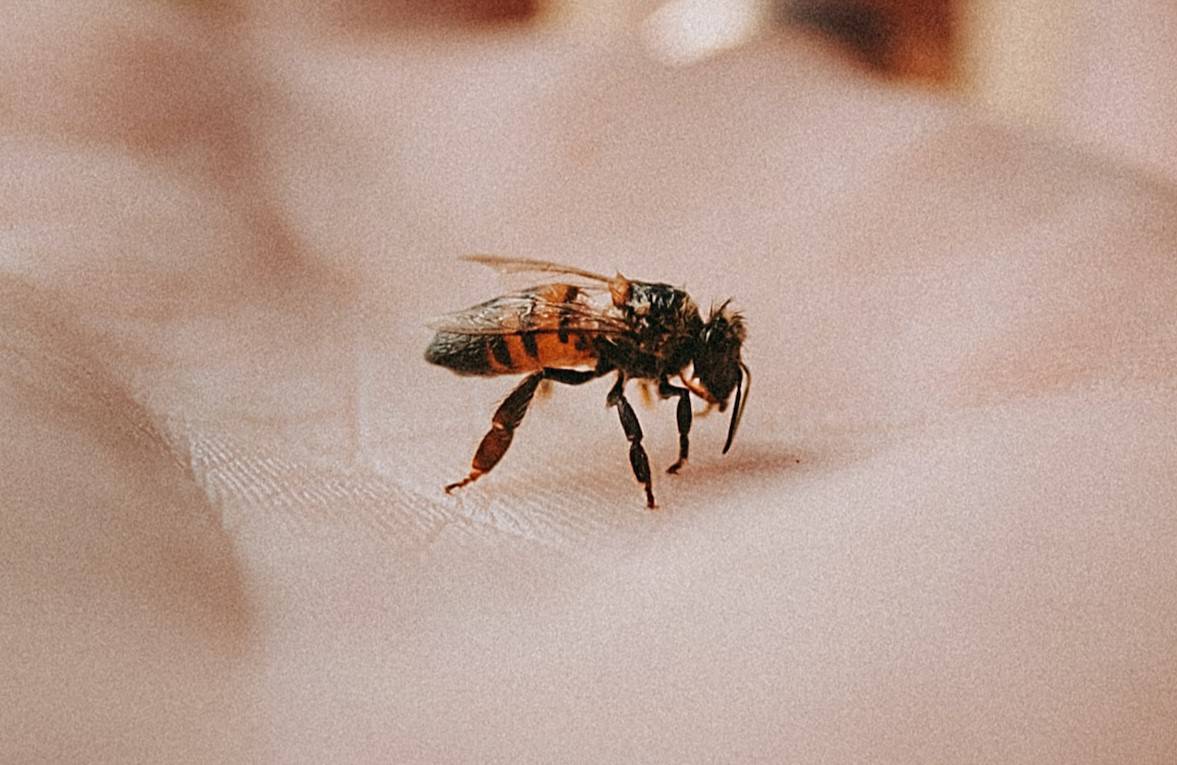Sometimes, we forget that honey bees aren’t the only types of bees out there.
When we attribute a third of our food to bees, most of us think of honey bees. Yet, they are just a sliver of the entire bee pie. Without these other species, we would eliminate many of our fruits and vegetables.
Our beekeeping activities affect other beneficial insects in the environment. Hence, protected areas are set up to preserve the ecosystem for native bees. Our interest in honey bees compliments our need to understand other bee species.
How Many Types of Bees Are There?
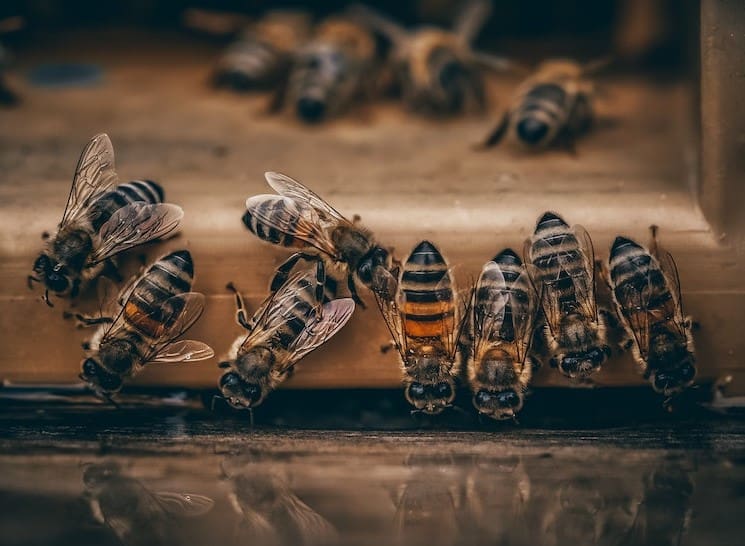
There are over 20,000 species of bees all over the world. In the U.S., scientists have found over 4,000 native species. Plants have evolved ways to attract and take advantage of their pollination and honey production services.
Going through all the native bee species would require an encyclopedic type of post, and this isn’t one of those. But what are the most common types of bees? We’ll just go through some of the types of bees commonly found in yards and gardens.
When it comes to bees, there are two main classifications: native bees and foreign bees.
Native bees are those that have evolved and naturally occur in a specific region or ecosystem, while foreign bees are non-native species that have been introduced by humans to a new environment.
Native Bees
These unsung heroes are indigenous to the United States. They are well-suited to the climate and adapted to native plant life, such as berries and squash. Often, they have a taste for a particular plant, with a very short list of alternatives. If that plant is cleared away, that species of bee could go extinct.
Take the Rusty Patched Bumblebee, for example. Agricultural activities have caused their populations to shrink, nearing extinction.
Most native species are solitary bees. Every bee nests alone and does not share child-rearing responsibilities.
Native species are harder to track, unlike their cousins, the honey bee. However, their efficiency as pollinators has motivated some farmers to invest in them. Alfalfa farmers buy alkali bees to aid in the pollination of this vital crop.
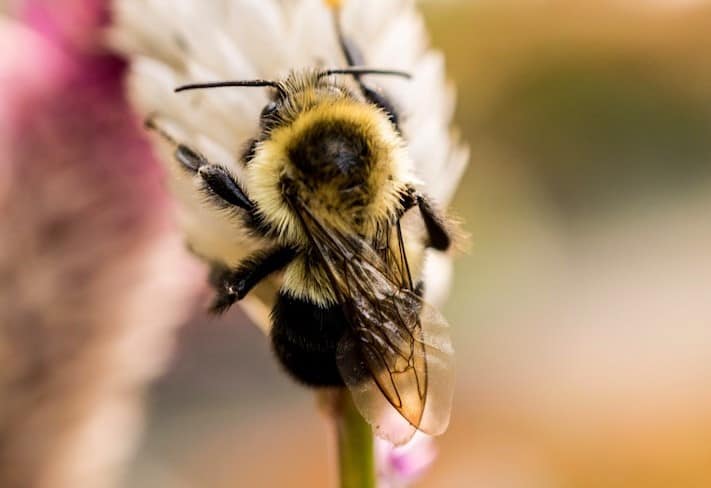
Foreign Bees
The early European settlers introduced honey bees, specifically the European dark bee species, in the 1600s. Since then, we have imported different races of honey bees.
Among the honeybee species that are imported from other countries are the Italian honeybees and the Carniolan bees.
We have imported some solitary bees as well, e.g., the Japanese horned bee.
Advantages of foreign bees
One major advantage is the homegrown crop of honey we now love and enjoy. Without these species, honey production would be at its minimum, and we would have to import honey.
It has also allowed us some agricultural benefits because, despite being less efficient than the native species, their numbers make up for this deficit. That has created an industry of its own, allowing beekeepers to increase their income streams by offering pollination services.
They are also less specialized, meaning if one source of nectar is absent, they’ll find the next best thing. With wild spaces and indigenous plants at risk, honeybees’ adaptability to changing food sources gives them a better chance at survival.

Disadvantages of foreign bees
One disadvantage is the introduction of pests and diseases. When we brought home these bees, we also brought along all that comes with them, including pests. These have had devastating effects, such as in the case of varroa mites. Many beekeepers lost colonies because of this tiny arachnid.
The solution is genetic. Some bees exhibit certain hygiene traits that enable them to get the mite off them, e.g., Saskatraz bees. The colony can thrive without chemical intervention because they groom the mites off them.
Nowadays, many beekeepers have resorted to other effective solutions for treating their bees and hives.
Another potential problem is bee-human conflict seen especially with Africanized honey bees. These were accidental imports that settled down and made this their home.
The original African bee is from the Savannah grasslands in East Africa, where it has to contend with aggressive predators. That has caused them to react explosively when under a perceived threat.
Despite their outbursts of defensive behavior, they do have some advantages. The bees fare well in the presence of mites, and their queens tend to be prolific. They grow and live in colonies at a fast rate.
In Mexico, for instance, they have learned to harness these super defenders and profit from them. Also, the people in Africa have lived with and profited from them, so they are not senselessly destructive. However, as a new beekeeper, it is important to identify aggressive behavior and requeen, if necessary.
Some well-known Foreign Bees
Some foreign bees that were imported to the United States have grown so much in popularity that they have become the most popular bee species.
Among the popular foreign bees in the U.S. are the following:
Italian Bees (Apis mellifera ligustica)
The Italian honeybees are the most popular honeybee species that beekeepers prefer in their hives.
A native of Italy, the Italian honey bee is distinguished for its widespread commercial value. It has adapted well to a variety of climates in other regions of Europe and America.
Carniolan Bees (Apis mellifera carnica)
The Carniolan or carnica bees are native to South-Central Europe, specifically Slovenia, Austria, and other countries in the region.
For many beekeepers, it is the second most popular honeybee species.
Africanized Honey Bees
Also known as killer bees, this type of bee originated in Brazil and is a hybrid of two subspecies, the Africanized and European species. In the US, they prefer to stay in states with warmer climates. As its name suggests, killer bees attack different types of bees and people when their nests are threatened.
With yellow and black colors, it is often hard to distinguish a killer bee from the European honey bee or Western honey bee. When in doubt as to what species of bees you have in your garden, it is best to consult a pest control specialist before tackling its nest.
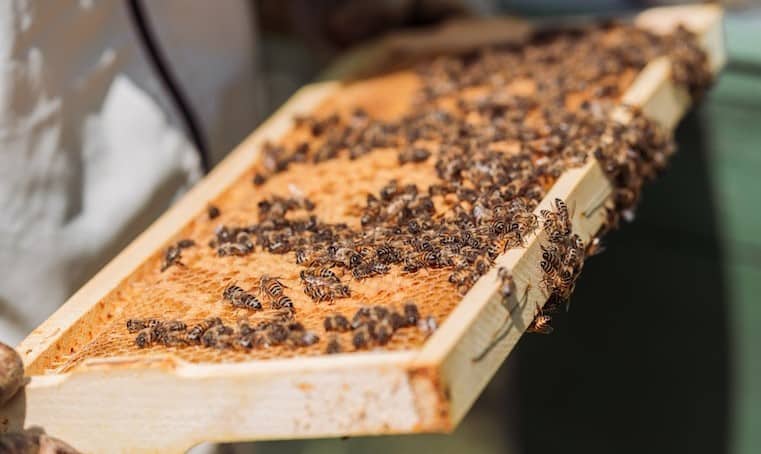
Types of native bees
Mining Bees
The mining bees or miners dig out tunnels in patches of bare soil in your garden. Although they are solitary creatures, they can live in clusters. But there’s no division of labor. Each female is responsible for setting up the offspring for the future.
Some of these superb pollinators include squash bees that specialize in pollinating squash. Alkali bees are mining bees, too. Farmers build habitats for them using a tarp and clay.
Cavity seekers
These little ladies move into existing cavities. If you have a bee hotel, these will be some of your frequent visitors.
Leafcutter Bees and Mason Bees
Both the leafcutter bee and the mason bee are ground bees that lead solitary lives. They rely on no one, working and living independently.
Leafcutters, thriving prominently in North America, use their mandibles to cut leaf pieces off plants, such as roses. They use these leaves to line the cavity creating some kind of origami tube. They then lay eggs, place food in the form of pollen bread, and seal the chamber.
Mason bees are a type of native bee more common in the US. Smaller than a honey bee but blue-black in color, they got the name by the fact that they have the habit of building their nest and sealing it with mud.
Interestingly, masons are fond of sipping the nectars from flowers. However, only female bees bring pollen back home. Unlike other different types of bees that carry pollen on their legs and pollen baskets, mason bees carry pollen on the underside of their abdomens.
Bumblebees
Bumblebees, with their lovely black and yellow coloring, are great pollinators for plants that require a good shake before giving up pollen. They find abandoned burrows in the ground where they build their nests.
Like honey bees, bumblebees are social bees, but the colony remains relatively small. Each colony starts with one queen. She lays a few eggs and cares for them until they emerge as adults.
Then, the roles switch. They take care of her, and she starts populating the colony. The colony only exists to bring the next generation of queens. Once the queens emerge, bumblebees find a burrow and nest in the ground to hibernate for the winter, and the cycle begins again in spring.
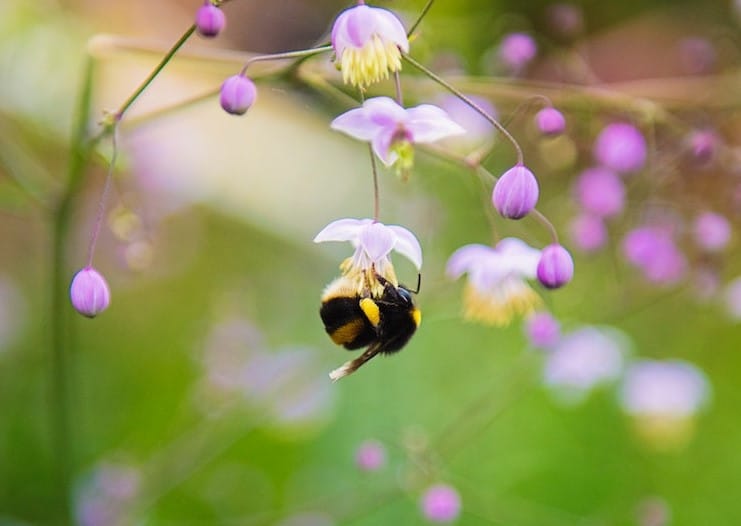
Carpenter bees
If you type ‘carpenter bees’ into any search engine, the first few links will direct you to pest control. Sure, carpenter bees drill holes in wood, as their name suggests, but I wouldn’t call them pests. Unlike termites, carpenter bees don’t eat the wood; they just make tunnels.
Sometimes, more than one carpenter bee will share an entrance tunnel, but they are still solitary bees, so the damage caused would be minimal.
Because of their size, carpenter bees, like the Blue Carpenter Bee, can be intimidating, but they rarely sting.
You’ll usually see a large bee hovering outside a tunnel. That’s usually a male waiting for a female to emerge from the nests. He makes a big fuss but doesn’t have a stinger.
Lesser-known bees
There are bee types that delegate child-rearing duties to other bee species. They are referred to as cuckoo bees because they lay their eggs in nests, usually in a solitary bee nest, and fly away to continue life carefree. The egg will hatch, eat the stores left for the intended egg, and even eat the other larvae.
This is a testament to how varied the bee family is. Unlike other common types of bees, these don’t make for great pollinators. They have very smooth bodies because, without the need to feed the young, they have no reason to collect and carry pollen and nectar.
Final Thoughts
Native bee species are vital for our existence. The attention that a honey bee gets is great for creating awareness of all the terrible things happening to most bees, but we can do more to help our native friends survive.
Let the lawn overgrow and grow flowering plants and native flowers and bushes to encourage some six-legged visitors. Bees like the azalea bee could benefit from some lovely rhododendrons and azaleas in your garden.
If we all do our part, we can make a difference.
